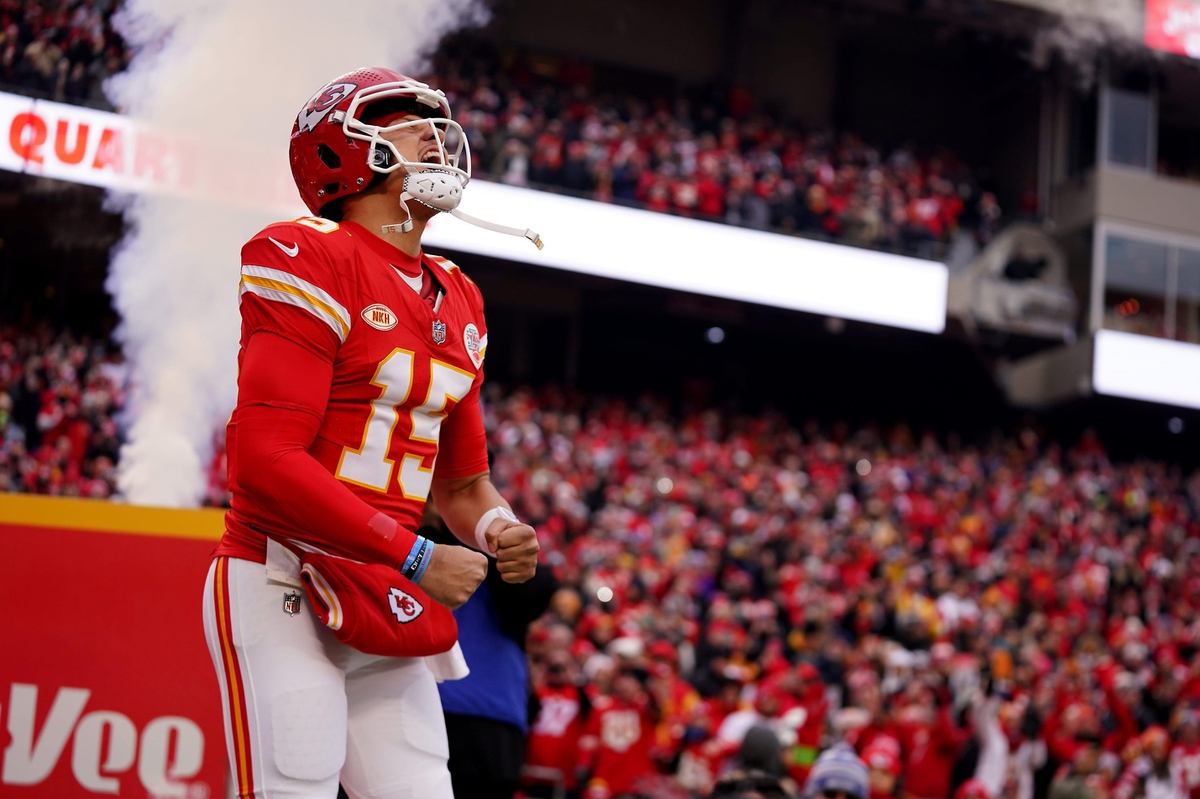Wind, Not Cold Impacts January Football

Weather is a primary focus of postseason football in games played outdoors in intemperate climates.
Putting a fine point on where to draw the line in expecting the conditions to impact the game is tough. Witness the Wildcard Round, where the extreme cold was supposed to put the offenses into a deep freeze; yet Patrick Mahomes and the Chiefs piled up 25 first downs and over 400 yards of total offense.
This week, the Chiefs are again in the crosshairs of the weather forecasters, with temperatures expected to be well below freezing in Buffalo on Sunday night, with winds between 10-and-15 mph.
We also have a game in Baltimore where the temperatures are expected to be slightly above freezing but with stiffer gusts.
A decade ago I wrote for the Wall Street Journal about the impact of wind on the passing game with the help of a physicist from the University of Nebraska.
I wrote: “Timothy Gay, professor of physics at the University of Nebraska and author of “The Physics of Football,” calculated precisely how wind speed affects passing.
According to Gay, the slower-velocity touch passing that is Manning’s specialty becomes difficult to execute once the wind hits 20 mph.
A 30-yard pass would be thrown off course by over a yard (37.8 inches).
Increasing the velocity of the throw from 40 to 60 mph reduces the effect to just over a foot (13.7 inches), but only a select few can throw that hard.”
Deflection In Inches At Various Wind Speeds
Here are the exact amounts a pass is deflected (moved off its pure trajectory) at the various wind speeds, courtesy of Professor Gay:
| Wind | 40 mph pass yds | 60 mph pass yds | 40 mph inches | 60 mph inches |
| 0 mph | 0 | 0 | 0 | 0 |
| 5 mph | 0.1075 | 0.034 | 3.87 | 1.224 |
| 10 mph | 0.29 | 0.1 | 10.44 | 3.6 |
| 15 mph | 0.6525 | 0.237 | 23.49 | 8.532 |
| 20 mph | 1.05 | 0.38 | 37.8 | 13.68 |
| 25 mph | 1.6375 | 0.62 | 58.95 | 22.32 |
| 30 mph | 2.28 | 0.85 | 82.08 | 30.6 |
So basically at about 15 mph, a wheel route to an RB thrown with touch by Lamar Jackson or C.J. Stroud on Saturday will be moved off its target line by about two feet while a seam route thrown forcefully to the tight end will be altered only about nine inches (thus remaining in the target zone).
Most passes are thrown in between these velocities and at shorter distances but it’s clear that 15-mph winds have a minimal impact on passing and thus scoring.
The wind speed is expected to be even less in Buffalo.
Plus that game is expected to be played at night and evening winds usually die down as the temperature of the air and the ground becomes more similar.
In Baltimore, the air is likely to be much warmer than the ground during the day, as daytime temperatures rise to about 34 degrees from 17 degrees overnight.
So expect stiffer gusts but, again, nothing dramatic as far as altering gameplay.
Mahomes, Reid Ignore January Weather
I looked at all the postseason games this century in conditions most similar to what will exist in Baltimore and on Sunday in Buffalo.
Surprisingly, nine of the 13 games most similar to what we’re expecting in Baltimore went under.
The average combined points were 38 and the median was 41.
Saturday’s over/under is 43.5. The road team went 6-7 against the spread (the Texans are 9.5-point underdogs). Nine of the 13 games were decided by 10 or more points.
Teams from warmer climates or who play indoors (like Houston) are 1-5 straight up in these postseason games since 2000.
There have been only 10 games played in more extreme cold (23 degrees is the forecast) and moderate winds, as we expect in Buffalo.
The average and median combined points are 45. The games are 7-3 to the over.
The Chiefs are also a cold-weather team so this is not relevant but note for future reference that warm-weather/dome teams are 0-3 straight up in extreme cold.
Against the spread, the home teams are just 5-5.
The Chiefs played in pretty much identical conditions to what is expected Sunday last year against the Bengals in the AFC Championship.
They covered and won, 23-20.
Mahomes went 29-for-43 for 326 yards and two TDs. If the Chiefs lose and Mahomes struggles, credit Buffalo’s defense, not the weather.
Since both QBs became starters in 2018, the Bills are 9-0 in games played in weather 30 degrees or colder.
Josh Allen’s net yards per pass attempt is a sparkling 6.74 (278 attempts).
The Chiefs are 8-2 but Mahomes has been even better, registering an NY/A of 7.20 (372 attempts).
The big takeaway here is that, as we saw last week, Andy Reid and Mahomes are not going to let the weather dictate their pass frequency.
In cold weather historically, the Bills have become more of a running team.
